03/21/2013. French radioprotection atomic energy security study (IRSN).
Product for "pollution of the food attention" staying in Japan French France government report /IRSN (December 20, 2012)
French radioprotection atomic energy security study (IRSN) announced "bulletin (8) about the first Fukushima nuclear plant accident" for the French resident in Japan on December 12. I do not greatly change from the last bulletin (September 22), but it is with contents promoting strong attention awakening for the expanse of the food contamination sequentially. Particularly, I mention pollution of rice chiefly.
In addition, this bulletin is the thing which the French Government announces to the own nation, but is made with diplomatic consideration to the Japanese Government being conscious of meeting eyes of the public. I can see I mention an action and a test result by the Japanese Government with an outcome of such a consideration. In addition, about some food, the cancellation of shipment restrictions had been already carried out, but should have been original same reason at the time of the announcement. After understanding, I think that you can read.
(partly edited)
☆A1. The situation of the food contamination
It is next food group now that the pollution caused by the radioactivity is possible.
・ Food consisting of the plants which had a leaf as of March when radioactive fallout fell (e.g.:) Fruit) becoming the undershrub with an evergreen including the tea, citron and the splinter,
・ Similarly the fruit which had a flower in accident those days (e.g.:) Fruit) producing a flower of the early blooming such as peaches.
・ Food (particularly milk and meat) consisting of animals brought up with polluted grass and straw
・ About the marine products, the pollution to seaweed and fishery products continues by the radioactive material which accumulated in the bottom of the sea in the suburbs of the Fukushima first Nuclear Power Plant.
1.1 The food contamination general condition of October and November
About the culinary plants produced in the soil, the tendency that a pollution degree fell to was seen generally. However, about the following thing, the thing more than the shipment standard that Japanese Government set and intake standards is found.
) that the thing with (※ becomes a target of shipment restrictions in plural areas of the applicable prefecture
・ Citron (※), kiwi fruit, persimmon, the pomegranate which were produced in Fukushima
・ Green leaf (※) of the tea leaf which have been purified produced in Tokyo and Saitama and tea produced in Kanagawa
・ Dry herb produced in Fukushima (stinking noxious weed tea)
・ The wasabi which was produced in Fukushima
・ Specific seafood (in Lake fresh-water smelt, ray, rockfish, Limanda yokohamae, rock trout, fish of the seas such as Pacific halibuts and Fukushima, Akimoto salmon) which I got in the sea, a lake, a river
・ Mushrooms cultivated in Fukushima (※), Chiba (※), Miyagi, Ibaraki (※), Tochigi (※), Kanagawa, Nagano, each prefecture of Shizuoka regardless of greenhouse cultivation, outdoor culture, nature
・ Fukushima and cow (※) from Miyagi
・ Meat of a wild boar of Fukushima and Tochigi, a deer and the bear
・ Rice of Fukushima and rice bran (rice bran) from Miyagi
・ The test result about a bamboo shoot and the plum which the pollution more than the standard values was found in before is not announced, but may appear in the market in form such as life, drying, the canned food.
1.2 Matters that require attention about the pollution to rice
・ The Japanese Government accepts rice growing only when pollution of cesium in the soil is less than 5,000 becquerels per 1 kilo. According to the international documents, the maximum of cesium which switches over from the soil with the pollution of this level to paddy (fir tree) is assumed 300 becquerels per 1 kilo theoretically. (ref.:) Last time "cannot deny in the following but the possibility that the thing of the pollution degree more than a theoretical value appears to the paddy cultivated in the neighborhood of the nuclear power plant where an accident happened". ) that it is added a postscript to.
・ The Japanese Government obliges the master that a pollution degree of the soil with the radiocesium is more than 0.1μSv an hour in radiation dose of more than 1,000 becquerels per 1 kilo or the land to crop one week ago of rice and the post-harvest inspection for two phases in the local government of Tohoku and Kanto.
・ When content of the radiocesium exceeds 200 becquerels per 1 kilo by random inspection carried out before a crop of rice, the pertinence area is appointed in the priority area for of the inspection, and the random inspection of relatively many samples is carried out about post-harvest rice. However, post-harvest inspection is carried out only about few samples when I am less than 200 becquerels per 1 kilo.
・ A limit is seen in the inspection system by such a Japanese Government. Pollution of 630 becquerels per 1 kilo was found in one of two targeted fields of the inspection after the crop whereas there was it in U.S. 1 kilo by the inspection before the crop in Fukushima-shi, and only radiocesium of 136 becquerels was detected. It is thought that nature and content of the radiocesium rise by rice maturing between post-harvest inspection if before gain, and a piece of rice drying.
・ Because I cannot grasp pollution with the radiocesium by the inspection before the crop enough, uneasiness is left in such inspection system. (the local government of plural ,) requests Japanese Government to inspect all rice.)
・ The radioactive contamination in the rice piles up to chaff (chaff) mainly. Therefore, the pollution degree lowers more in a process of the refinement to polished rice. On the contrary, a main part of the radiocesium included in the rice is included about the rice bran (rice bran). The rice bran is just eaten or can be used as bait of the domestic animal.
・ Generally, the polished rice that the inspection is targeted may be a mixture harvested by the different plural fields of rice because the rice is a process of the refinement, and various kinds of things are mixed. Therefore, the pollution of the U.S. whole is weakened, and the marketed pollution degree of rice may fall.
03/21/2013. フランス放射線防護原子力安全研究(IRSN).
「食品の汚染に注意」在日フランス人向けフランス政府公報/IRSN(2012年12月20日)
フランス放射線防護原子力安全研究(IRSN)は12月12日、日本在住のフランス人向けに「福島第一原発事故に関する公報(8)」を発表し ました。前回の公報(9月22日)から大きくは変わっていませんが、食品汚染の広がりに対し引き続き強い注意喚起をうながす内容となっています。特に、米 の汚染について重点的に言及しています。
尚、本公報はフランス政府が自国民あてに発表しているものではありますが、一般の目に触れることを意識し日本政府への外交的配慮のもとに作成されて います。日本政府による取り組みや検査結果に言及しているのは、こうした配慮の表れと見ることができます。また一部の食品については、既に出荷制限の解除 等が実施されていますが、発表当時の原文そのままの訳とさせて頂きました。ご理解の上、お読みいただければと思います。
(partly edited)
☆A1. 食品汚染の状況
今、放射能による汚染の可能性があるのは次の食品群である。
・ 放射性降下物が降った3月の時点で葉がついていた植物からなる食品類(例:茶をはじめとする常緑樹、柚子、および刺のある小低木になる果実類)、
・ 同じく、事故当時に花が付いていた果実類(例:桃などの早咲きの花をつける果実類)。
<ref.>「刺のある小低木になる果実類」には、ブルーベリー、レモンなどが含まれます。参考写真はこちら:http://www.google.co.jp/search?q=arbuste+épineux&hl=ja&client=safari&rls=en&prmd=imvns&tbm=isch&tbo=u&source=univ&sa=X&ei=F7iFTrzzBoncmAXKyfUE&ved=0CB4QsAQ&biw=1259&bih=636
・ 汚染された土壌で生産された野菜類
・ 汚染された草や藁で育成された動物からなる食品(特に、牛乳および肉)
・ 海産物については、福島第一原発近郊の海底に蓄積した放射性物質により、海藻類や魚介類への汚染が継続している。
1.1 10月と11月の食品汚染 概況
土壌で生産される野菜類については、全般的に汚染度が下がる傾向が見られた。しかし下記のものについては、日本政府が設定した出荷基準、および摂取基準を超えるものが見つかっている。
(※がついたものは、該当県内の複数の地域において出荷制限の対象となっている)
・ 福島県において生産された柚子(※)、キウイフルーツ、柿、ザクロ
・ 東京都および埼玉県で生産された精製済み茶葉、および神奈川県で生産された茶の生葉(※)
・ 福島県で生産された乾燥ハーブ類(ドクダミ茶)
・ 福島県で生産されたわさび
・ 海・湖・川で取れた特定の魚介類(ワカサギ、エイ、メバル、マコガレイ、アイナメ、オヒョウなどの海の魚、および福島県・秋元湖で穫れた鮭)
・ 温室栽培・露地栽培・野生を問わず、福島県(※)、千葉県(※)、宮城県、茨城県(※)、栃木県(※)、神奈川県、長野県、静岡県の各県で栽培されたキノコ類
・ 福島県と宮城県産の牛(※)
・ 福島県と栃木県のイノシシ、鹿、および熊の肉
・ 福島県の米と宮城県産の糠(ぬか)
・ 以前、基準値を超える汚染が見つかったタケノコや梅についての検査結果は発表されなくなっているが、生、乾燥、缶詰などの形で市場に出回る可能性がある。
1.2 米への汚染に関する注意点
・ 日本政府は土壌におけるセシウムの汚染が1キロあたり5000ベクレル未満の場合にのみ稲作を認めている。国際的な文献によれば、このレベルの汚染がある 土壌から籾(もみ)に移行するセシウムの最大値は理論上1キロあたり300ベクレルとされている。(ref.:前回は、以下に「しかし、事故が起きた原子力発 電所の近辺で栽培された籾に理論値以上の汚染度のものが現れる可能性は否定できない。」が追記されている)
・ 日本政府は、放射性セシウムによる土壌の汚染度が1キロ当たり1000ベクレル以上、もしくは土地の放射線量が毎時0.1マイクロシーベルト以上の主に東北と関東の自治体において、米の収穫1週間前と収穫後の二段階にわたる検査を義務づけている。
・ 収穫前に実施される米の抜き取り検査で放射性セシウムの含有量が1キロ当たり200ベクレルを超えた場合には、該当地域は検査の優先対象地域に指定され、 収穫後の米について比較的多くのサンプルの抜き取り検査が実施される。しかし1キロ当たり200ベクレルを下回った場合には少数のサンプルについてのみ収 穫後の検査が実施される。
・ こうした日本政府による検査体制には限界が見られる。福島市では、収穫前の検査で米1キロ当たりにつき136ベクレルの放射性セシウムしか検出されなかっ たのに対し、収穫後には検査の対象となった2つの田のうちの1つで、1キロ当たり630ベクレルの汚染が見つかった。収穫前と収穫後の検査の間に米が熟成 し米粒が乾燥することにより、自然と放射性セシウムの含有量が上昇することが考えられる。
・ 収穫前の検査では放射性セシウムによる汚染を十分に把握できないことから、こうした検査体制には不安が残る。(現在、)複数の自治体が日本政府に対し、全ての米を検査するよう求めている。
・ 米における放射能汚染は主に籾殻(もみがら)に溜まる。従って、白米への精製の過程で汚染度はより低くなる。逆に、糠(ぬか)については米に含まれる放射性セシウムの主要部分が含まれている。糠はそのまま食される、もしくは家畜の餌として使用されうる。
・ 一般に、米は精製の過程で種々のものが混ぜられるため、検査の対象となっている白米は異なる複数の田から収穫された米の混合物である可能性がある。このため米全体の汚染は薄められ、市販される米の汚染度は下がる可能性がある。
☆A2. By the inspection about the radioactive contamination of food carried out in advice Japan about the food contamination to the French public living in Japan, a pollution degree about vegetables seems to decrease generally. However, the attention that it follows it about the product of the prefecture that strongly received damage of radioactive fallout caused by an accident in the Fukushima first Nuclear Power Plant, and is severe is necessary. IRSN urges follows. (another point from the last time displays it by an underline)
・ I avoid citron, a fig, a persimmon, ざくろ, fruit such as the kiwi fruit produced in a prefecture (Fukushima, Tochigi, Ibaraki, Miyagi, Gunma, Saitama, Tokyo, Kanagawa, each prefecture of Chiba) where the radioactive contamination more than the standard values is found in after March 11 and mushrooms. Or I take in only the food that it is confirmed that pollution degrees do not exceed the standard value.
・ Among the preservation food such as canned food or the evaporated food particularly tea, herb tea (a note:) I take it in after confirming that it was produced out of the area where a production day confirms an outbreak former thing of the nuclear plant accident about), a bamboo shoot, a plum, the food including the persimmon thought to point to the stinking noxious weed tea or the shipment limit suffers from.
・ I warn you, and, about the rice, do not take in rice bran (rice bran) produced in Fukushima, Miyagi, Tochigi, each prefecture of Ibaraki not to be partial to the thing of the as possible specific production center.
・ About the food which does not know a straight production center and a radioactive concentration, I refrain from daily intakes.
・ Because the product which was just harvested just appeared in the market, and the inspection about the pollution level is not announced, avoid an intake.
・ Take it in after confirming that I confirm that pollution degrees do not exceed the standard value about a sand lance in particular, fresh-water smelt, a ray, a rockfish, saltwater fish such as the Limanda yokohamae and a sweetfish, the river fish such as salmons, seaweed, other fishery products about the marine products or I was produced in the sea of West Japan.
・ About the beef, I take in only the thing which passed through inspection. In addition, choose the high quality meat which a producer inspects for all products as much as possible.
・ I do not take in the meat (wild boar, deer) of a wild animal living in the forest area.
☆A3. Advice (there is approximately no change from the last time) to the person who may make a voyage to the area (four prefectures around Fukushima) that influence of the radioactive fallout is the highest in and a person living in the field
・ IRSN thinks that Miyagi, Ibaraki, Tochigi and Fukushima in particular suffered serious damage of the radioactive fallout by the Fukushima nuclear plant accident. When there are an on-the-job voyage and important business about Fukushima except the no-go area, Miyagi, Ibaraki, Tochigi, I can make a voyage with the proviso that I observe all the following instructions. However, there be it on the voyage except the important business such as a hobby or the trip to avoid receiving radiation exposure caused by the radioactivity unnecessarily.
・ Never enter an area of a radius of 20 kilometers and Katsurao-mura, Namie-machi, Iitate-mura, a part of Kawamata-machi, a part of Minamisoma-shi from the Fukushima Nuclear Power Plant that Japanese Government prohibits an entrance.
☆A4. Miyagi, Ibaraki, Tochigi, advice matter (there is approximately no change from the last time) to the French living in four prefectures of Fukushima
・ I write down that I use the vegetables which I harvested from the home private vegetable garden where the inspection about the pollution degree is not carried out and a domestic animal animal keeping at home for food to the maximum.
・ You may be careful before eating, and, about vegetables and the fruit which touched the soil, wash it.
Try to keep a hygiene state at the home well not to bring a pollutant into the inside of the building from the outside. Particularly, I am careful as follows.
・ I do not bring shoes into the house on a rainy day.
・ I wipe a floor with a wet dustcloth regularly.
・ I cover furniture, a carpet, the surface of the carpet with a vacuum cleaner regularly. I change a bag in a vacuum cleaner regularly.
・ I wash a hand with the liquid soap which entered the pump type container regularly so that a hand touches the mouth unconsciously, and pollution does not happen.
・ Always watching it that a young child plays and does not put a grain of the outdoor soil and sand in a mouth.
☆A2. 日本に住むフランス人一般への食品汚染に関する勧告
日本で実施されている食品の放射能汚染に関する検査では、野菜に関する汚染度が全般的に低下しているように見える。しかし福島第一原発における事故 によって発生した放射性降下物の被害を強く受けた県の生産物については、引き続き厳重な注意が必要である。IRSNは下記を勧告する。(前回からの追加点 は下線で表示しています)
・ 3月11日以降、基準値を超える放射能汚染が見つかっている県(福島、栃木、茨城、宮城、群馬、埼玉、東京、神奈川、千葉の各県)で生産された、柚子、イチジク、柿、ざくろ、キウイフルーツなどの果物類、およびキノコ類を避ける。もしくは、汚染度が基準値を超えないことが確認されている食品のみを摂取する。
・ 缶詰や乾燥食品などの保存食のうち、特に茶、ハーブティー(注:ドクダミ茶等を指していると思われます)、タケノコ、梅、柿を含む食品については、生産日が原発事故の発生前であることを確認する、もしくは出荷制限のかかっている地域外で生産されたものであることを確認してから摂取する。
・ 米については、可能な限り特定の産地のものに偏らないよう注意し、福島、宮城、栃木、茨城の各県で生産された糠(ぬか)を摂取しないこと。
・ 生産地や放射線濃度が分からない食品については、日常的な摂取を控える。
・ 収穫されたばかりの生産物は、市場に出たばかりで汚染値に関する検査が発表されていないことから、摂取をさけること。
・ 海産物については、特にイカナゴ、ワカサギ、エイ、メバル、マコガレイなどの海魚、および鮎、鮭などの川魚、海藻、その他の魚介類について、汚染度が基準値を超えていないことを確認する、もしくは西日本の海でとれたものであることを確認してから摂取すること。
・ 牛肉については、検査を経たもののみを摂取する。また、可能な限り生産者が全ての製品について検査を行っている質の高い肉を選ぶこと。
・ 森林地帯に住む野生動物の肉(イノシシ、鹿)を摂取しない。
☆A3. 放射性降下物の影響が最も高い地域(福島周辺の4県)に渡航する可能性のある者、および現地に居住する者への勧告(前回からほぼ変更無し)
・ IRSNは、宮城、茨城、栃木、そして特に福島県が福島原発事故による放射性降下物の深刻な被害を被ったと考えている。立ち入り禁止区域を除く福島、宮 城、茨城、栃木については、業務上の渡航および重要な所用がある場合には、下記の注意事項を全て遵守することを条件に渡航することができる。しかし不要に 放射能による被曝を受けることを避けるため、趣味や旅行などの重要な所用以外での渡航は控えること。
・ 日本政府が立ち入りを禁止している福島原発から半径20キロメートルの地域及び葛尾村、浪江町、飯舘村、川俣町の一部、南相馬市の一部には決して立ち入らないこと。
☆A4. 宮城、茨城、栃木、福島の4県に居住するフランス人への勧告事項(前回からほぼ変更無し)
・ 汚染度に関する検査が実施されていない自宅の家庭菜園から収穫した野菜や、家庭で飼っている家畜動物を食用に用いるのを最大限に控える。
・ 土壌に触れた野菜や果物については、食べる前に注意してよく洗うこと。
外部から建物の内部に汚染物質を持ち込まないよう、家庭での衛生状態を良好に保つようつとめること。特に、下記に注意する。
・ 雨の日は靴を家の中に持ち込まない。
・ 濡れた雑巾で床を定期的に拭く。
・ 家具、カーペット、敷物の表面に定期的に掃除機をかける。掃除機の中袋を定期的に交換する。
・ 無意識に手が口に触れて汚染が起きないよう、ポンプ式容器に入った液体石けんで手を定期的に洗う。
・ 幼い子どもが遊んでいて戸外の土や砂の粒を口にいれないよう、常に見張っていること。











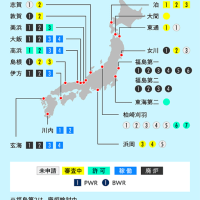

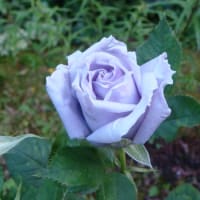
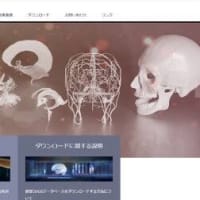
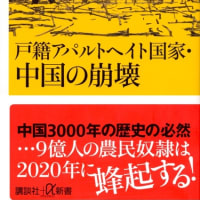
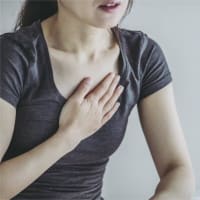


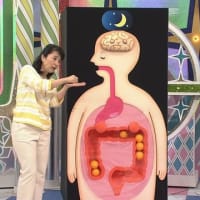
※コメント投稿者のブログIDはブログ作成者のみに通知されます